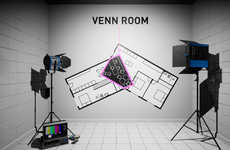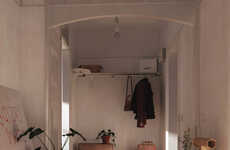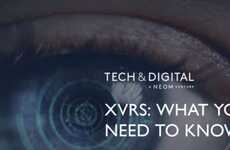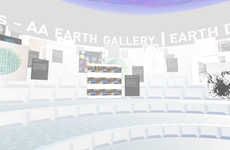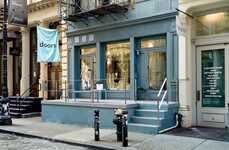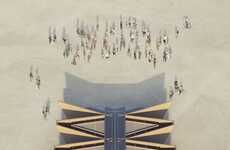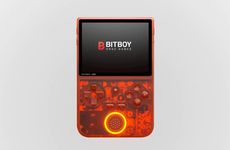
New City
Think of it as an advanced 'Second Life' for architects and designers where they can experiment with visualization, architecture, design, information and simulation that would not be possible in reality. New City, a Web-based virtual city by Peter Frankfurt, Greg Lynn, and Alex McDowell that is commissioned especially for Design and the Elastic Mind, the new installation at the Museum of Modern Art in New York, is the first architecturally considered virtual environment, destined to take virtual worlds to the next level.
“Imagine a community that is composed of the entire population of the world,†says Peter Frankfurt of Imaginary Forces, “and that community living in a virtual city built by the most interesting and progressive architects, writers, filmmakers, game designers, scientists, physicists, that are working today.†The city is built on a manifold, a surface that forever folds onto itself, capturing endless dimensions of space and time. “It will visualize and play with the historic, the present, the latent and the potential,†continues Frankfurt. “Its openness and seamlessness transform it into a visualization of the way we already live today and enable us to test and project not only new buildings and objects, but also new social behaviors.â€
Potentially, New City could be accessed via similar elaborate installations across the world or through PDAs and computer screens. The creators are looking for ways to expand the project, such as commissioning a novelist to create an immersive narrative for the City.
“Imagine a community that is composed of the entire population of the world,†says Peter Frankfurt of Imaginary Forces, “and that community living in a virtual city built by the most interesting and progressive architects, writers, filmmakers, game designers, scientists, physicists, that are working today.†The city is built on a manifold, a surface that forever folds onto itself, capturing endless dimensions of space and time. “It will visualize and play with the historic, the present, the latent and the potential,†continues Frankfurt. “Its openness and seamlessness transform it into a visualization of the way we already live today and enable us to test and project not only new buildings and objects, but also new social behaviors.â€
Potentially, New City could be accessed via similar elaborate installations across the world or through PDAs and computer screens. The creators are looking for ways to expand the project, such as commissioning a novelist to create an immersive narrative for the City.
Trend Themes
1. Virtual World Visualization - The creation of advanced virtual environments for architects and designers to experiment with visualization, architecture, design, information, and simulation provides opportunities for disruptive innovation in fields such as urban planning and digital design.
2. Innovative Architectural Design - New City's focus on innovative architecture and design opens up opportunities for disruptive innovation in fields such as sustainable building and modular construction.
3. Interactive Virtual Experiences - The expansion of New City into immersive narratives and accessibility via PDA and computer screens presents opportunities for disruptive innovation in fields such as entertainment and education.
Industry Implications
1. Architecture - The use of virtual environments to experiment with innovative architecture and design offers disruptive innovation opportunities for architects and designers.
2. Urban Planning - Virtual world visualization presents urban planners with the opportunity for disruptive innovation in designing more sustainable and livable cities.
3. Entertainment - The creation of interactive virtual experiences provides opportunities for disruptive innovation in entertainment through more immersive and engaging narratives.
2.5
Score
Popularity
Activity
Freshness


